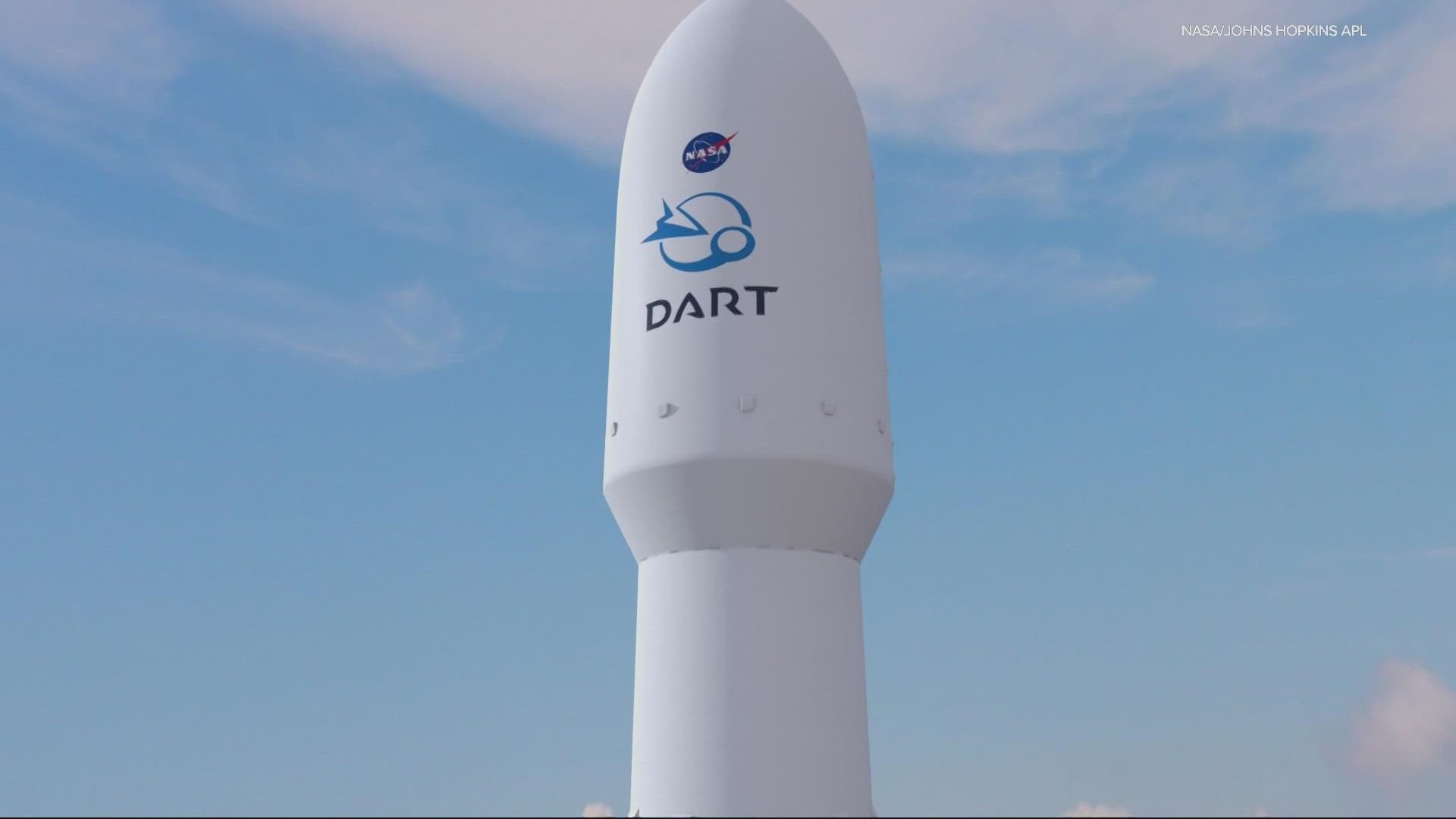VANDENBERG AIR FORCE BASE, Calif. — Editor's note: The video above first aired on November 23, 2021.
Next Monday the National Aeronautics and Space Administration will conduct a first-of-it's-kind experiment; scientists will crash an unmanned spacecraft into an asteroid in an attempt to change its flight path.
The procedure, now called the "Double Asteroid Reduction Test" or DART, will crash a craft into a large asteroid called "Didymos." After impact, scientists at NASA will monitor the asteroid's speed and trajectory.
Although Didymos is not on a collision course with Earth, this technology could be used one day to defend against future asteroids which may hit the planet. Didymos is a fair-sized rock, almost 2,600 feet in diameter. It is also orbited by a slightly smaller asteroid. NASA is hoping to change the speed and flight path of both.
The first step of the test happened in November of 2021 with the launch of the DART spacecraft from Vandenberg Space Force Base in California. The launch was a collaboration between the government and private industry, with Elon Musk's SpaceX providing the rocket.
A big part of this test is not only figuring out the necessary amount of force to change the movement of an asteroid, but also how the rock will behave after being struck. Scientists don't know how much wreckage will be produced, or if the asteroid will break into pieces. As this study is the first of its kind there remain a lot of unanswered questions.
NASA noted that while no asteroid has been found that poses a threat to earth for at least the next 100 years, this program is part of their commitment to being ready for anything. Roughly four years from now the European Space Agency will launch its "Hera Project" which is set to collect samples from Didymos and survey the damage. This will help scientists further understand the behavior of the asteroid over a longer period of time.
The DART project and spacecraft were developed by the Johns Hopkins Applied Physics Laboratory in Laurel, Maryland.
A satellite provided by the Italian Space Agency will detach from DART before it crashes into Didymos. The satellite called "CubeSat" will take pictures of both before and after the impact.

